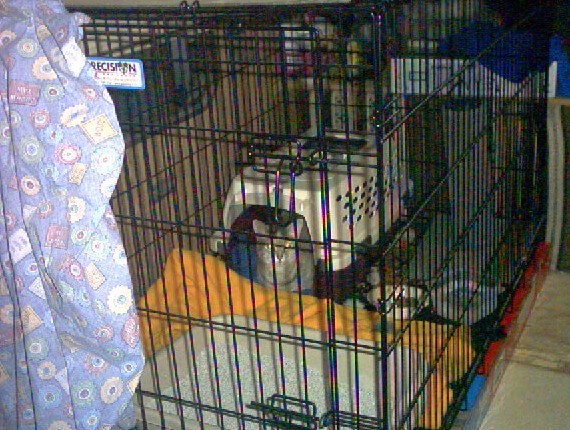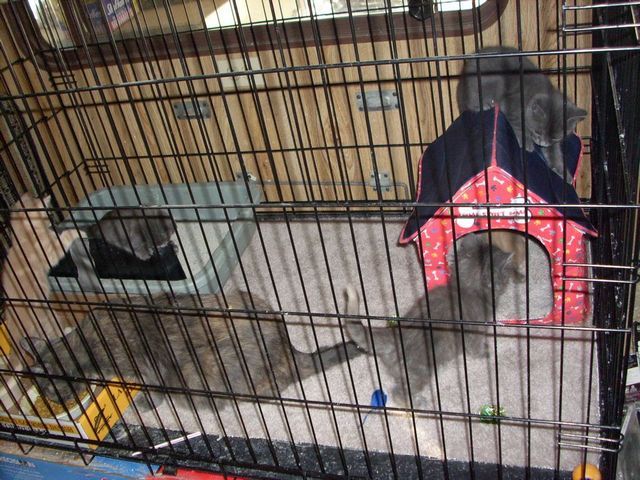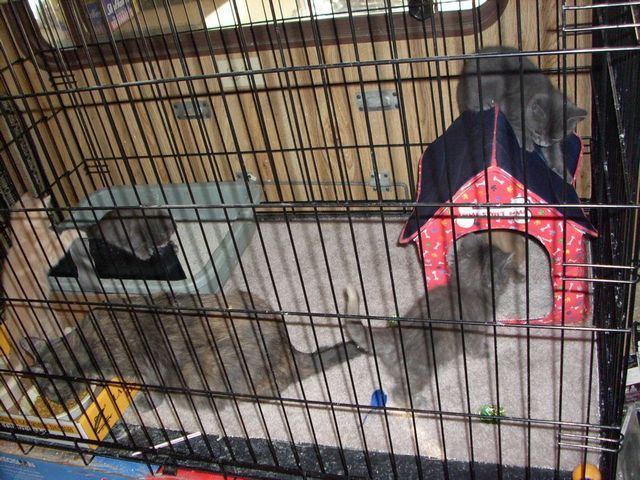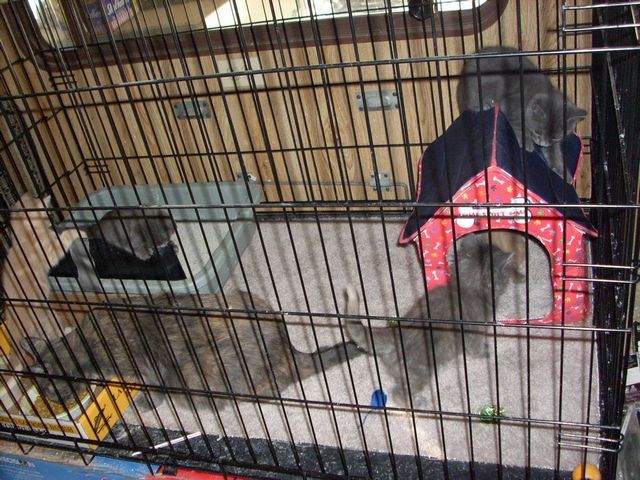QuestionTabbi,
I, like Melissa got a new dog from the rescue place - 50 lbs and 7 months old. I had to have my 13 year old dog put to sleep and my other dog I've had for a year was really depressed as she had only ever been with the 13 year old. I've had my cat Jack for four years and I love him a lot and he loves my dog alot too. I also made the mistake of only supervising the new dog and the cat for 2 days. On the fourth day I came home and the house was trashed and Jack was on top of the refrigerator terrified. He snuck through the doggie door and the new dog must of chased him throughout the house and absolutely terrorized him. I found a new owner for the dog and waited a couple of weeks and Jack reluctantly came back into the house after I washed everything and got rid of the new dog scent and things settled down. I got a new dog a week ago (11 lbs - full grown) and Jack will not come in the house at all even though he does come to the house to eat. He has not seen the new dog as I keep it kenneled when he comes home.
I don't want to force him to come in the house as he is so traumatized from the first dog but should I make him come in to eat or let him eat in the garage? Should I make him stay in a certain period of time? I don't want him to disappear like Melissa's cat as he was a stray too. It breaks my heart to see him sitting in front of the house. Will it ever work with this new dog after he was so traumatized? Winter is coming and I need to do something.
AnswerDianne,
Unfortunately your cat may be permanently traumatized. I would try the introduction process for dogs and cats though and hopefully it may work. You didn't say what breed the dog is. Some breeds should never be around cats, such as Jack Russells and Siberian Huskeys. Labs are the best (in my opinion) around cats. And hopefully the new dog was not allowed to be a 'cat chaser'.
Here is a good article about introductions from the 'Dogman':
(copy and paste, or type, the whole link into your address bar)
http://www.thedogman.net/DogmanArticlesText.asp?ID=366
and here is an excerpt from an article by the Human Society:
"Introducing a New Dog to a Resident Cat
If you plan to bring a dog into a home with a resident cat, your best bet is, in most cases, a very young puppy, one too little to accomplish much barking or chasing of the cat. Although most cats recognize that an 8 week-old puppy isn't much of a threat, you will need to monitor their time together at first to guard against injury such as a slash across the puppy's eyes. It is possible to combine unfamiliar adult dogs and adult cats, but it may take a lot of work and time; it all depends on the personalities of the dog and cat. The following routine will maximize your chances for success in introducing a new dog to your cat:
(1) Before you attempt a face-to-face meeting, keep the animals separated and first let them get used to the smell of the other and be aware the other's presence in a non-threatening manner. Feed them closer and closer on opposite sides of the closed door separating their areas until they can eat calmly right next to the door. Hopefully, they will begin to associate the presence of the other animal with good things like eating. It would also be a good idea to begin teaching (or reviewing) some basic obedience commands ("sit," "down," "stay") to your new dog in preparation for the face-to-face meetings.
(2) Keep the first face-to-face meetings short and both animals controlled. One person should be with the leashed dog, commanding him to "sit" or "down" while the other person holds the cat on his/her lap on the other side of the room. If the dog behaves aggressively, he should be distracted by pulling on the lead or giving a command. Both animals should be praised and rewarded with special tidbits of food for calm behavior. Reward for good behavior is far better than punishment because you want the dog to associate pleasant things with the cat's presence. Gradually bring the two closer until they have the chance to investigate each other face-to-face. The behavior of the animals will tell you whether this will take one or many short sessions.
(3) If the cat and dog seem happy together in the controlled situation, the next step is to allow them loose in the room together, but be certain that the cat has an escape route or a safe place to hide in case the dog becomes excited. Keep them separated when you are gone until you are sure that they can get along. If this step does not go well, go back and spend more time on the earlier introductory stages.
Always be cautious and concerned for the safety of your cat and dog when introducing adult animals, even if they have previously had an amicable relationship with an individual of the other species."
****************************
If you bring Jack in the house, I would bring him in in a carrier because when you get inside he may go ballistic on you.
I hope this helps, and that with love, attention, and patience, your cat and dog will eventually get along.
Tabbi

 my cat is behaving out of sorts
QuestionQUESTION: hi
i recently moved, and whereas my c
my cat is behaving out of sorts
QuestionQUESTION: hi
i recently moved, and whereas my c
 Male/female matter for new cat?
QuestionI have a 2 1/2 yr old male who is very affectio
Male/female matter for new cat?
QuestionI have a 2 1/2 yr old male who is very affectio
 Neutred female with 6 moth non-neut male
QuestionOur female cat love our other white male, both
Neutred female with 6 moth non-neut male
QuestionOur female cat love our other white male, both
 Mom Cat doesnt remember her 5month old kittens
Question
the kittens
A while back I rescued a pregnant
Mom Cat doesnt remember her 5month old kittens
Question
the kittens
A while back I rescued a pregnant
 Agression towards guests in the home
QuestionQUESTION: Hello,
About 2 weekends ago, my 4 mo
Agression towards guests in the home
QuestionQUESTION: Hello,
About 2 weekends ago, my 4 mo